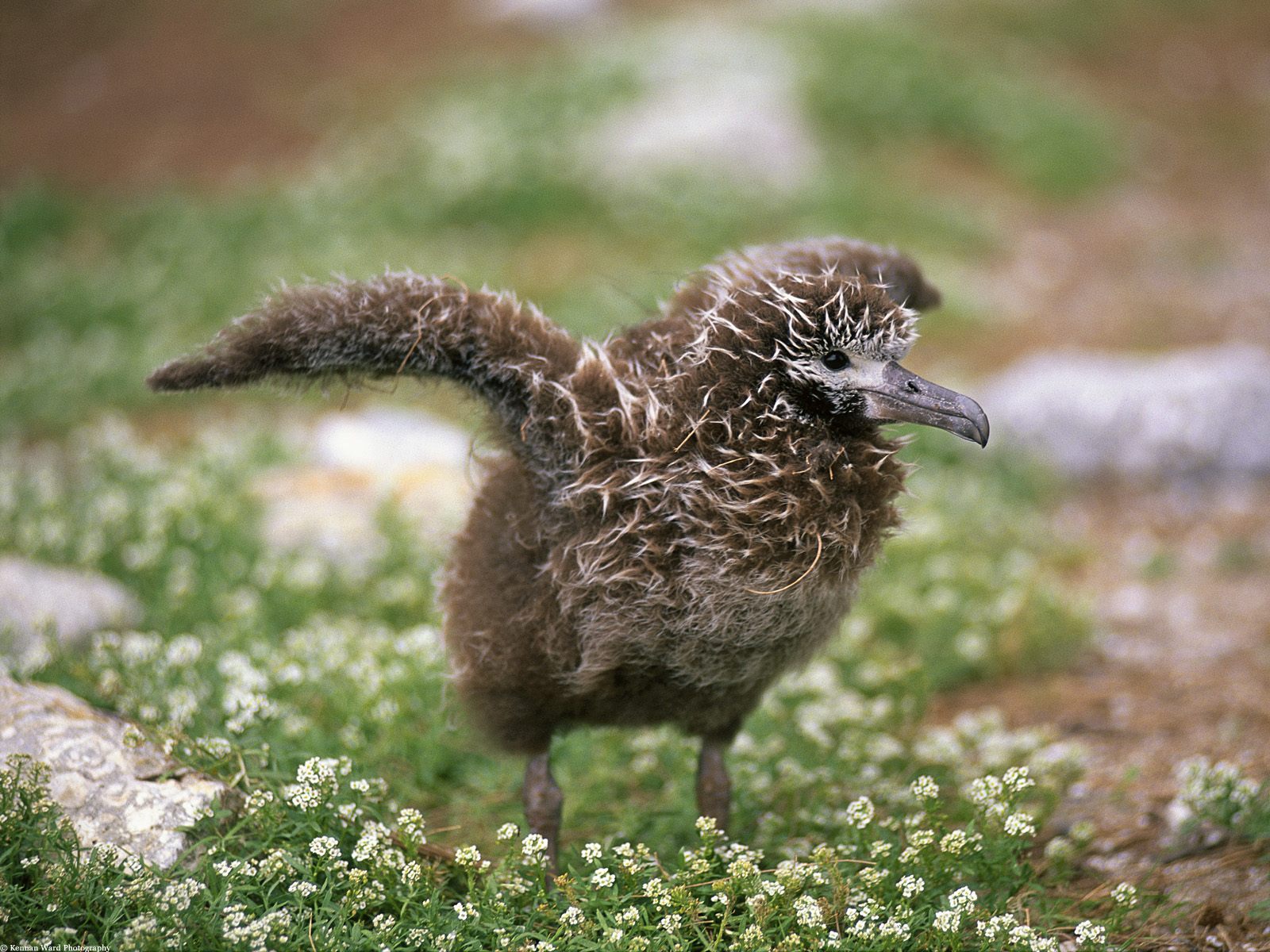 |
| Laysan albatross by Ron LeValley http://www.levalleyphoto.com/ |
I've lived here for 20 years, and for as long as I can remember, starting in mid-November, we on the Mendocino coast of California wait for news of Al B. Tross' return to Point Arena.
At length did cross an Albatross,
Thorough the fog it came;
As it had been a Christian soul,
We hailed it in God's name.
It ate the food it ne'er had eat,
And round and round it flew.
The ice did split with a thunder-fit;
The helmsman steered us through!
Thorough the fog it came;
As it had been a Christian soul,
We hailed it in God's name.
It ate the food it ne'er had eat,
And round and round it flew.
The ice did split with a thunder-fit;
The helmsman steered us through!
From the Rime of the Ancient Mariner
by Samuel Taylor Coleridge.
Source: http://www.montereybayaquarium.org/cr/oceanissues/plastics_albatross/
| nhptv.org |
In the early 1980s, I did an Earthwatch project http://www.earthwatch.org/ on the Hawaiian island of Kauai. The project used albatross decoys in an attempt to encourage the Laysan albatross to establish a breeding colony at the Kilauea Light Station. I see on Wikipedia that the project was a success, and it is now the Kilauea Point National Wildlife Refuge. http://en.wikipedia.org/wiki/Kilauea_Point_National_Wildlife_Refuge
The Laysan Albatross is best known for its gliding flight, awkward landings, and elaborate courtship rituals. These birds spend nearly half the year at sea, not touching land until breeding season. Though large for a seabird, the Laysan is small for an albatross. They may live more than 40 years. These birds are named for Laysan, one of their Hawaiian island breeding colonies.
Japanese feather hunters decimated many Laysan colonies at the turn of the century. Colonies at Volcano, Wake, and Marcus Islands have never recovered. Between 1958 and 1964, thousands of albatross were killed by collisions with antenna towers and aircraft strikes during landings and take-offs at Midway. Tens of thousands of albatross were intentionally killed in order to reduce such collisions. Today, eggs and birds continue to be removed at Hawaiian island airfields, in order to discourage nesting and ensure aircraft safety. On land, introduced predators, and lead poisoning from abandoned military buildings on Midway kills thousands of Laysans annually. At sea, the species is vulnerable to oil pollution, and the ingestion of floating plastics; tens of thousands also die in gill-nets, drift nets, and long-line fishhooks annually. Alternative long-line fishing techniques now being developed include weighing lines down, setting them at night, and using "screamer lines" to scare birds away.
Another beneficial human activity—the importing of topsoil and grass to Midway's Sand Island—has stabilized the sand dunes and increased albatross habitat. This coupled with the diminished human presence on Midway have led to increased Laysan populations there. At Kilauea Point National Wildlife Refuge on Kauai, protection by fencing and wildlife personnel has helped establish a breeding Laysan colony.
Source: http://birds.audubon.org/species/layalb
 |
| Ron LeValley http://www.levalleyphoto.com/ |
 |
| Ron LeValley Albatross landing http://www.levalleyphoto.com/ |
 |
| Ron LeValley Midway Island Albatross Colony http://www.levalleyphoto.com/ |
Laysan Albatross & Plastics
The Problem
In the middle of the North Pacific Ocean, on a tiny island 1,000 miles from the nearest big city, many Laysan albatross chicks die each year because their bellies are full of bottle caps, toothbrushes and other plastic. One study found that 97.5% of chicks had plastic in their stomachs. Many people think that the biggest source of pollution in the oceans is oil spilled from ships, but most marine pollution is litter that starts out on land. By making changes now, we can reduce the amount of plastic that gets into our oceans in the months and years to come.
A Deadly Diet
Albatrosses fly hundreds, sometimes thousands of miles in search of food for their chicks. They look for squid and fish eggs floating on the surface of the water. Unfortunately, plastic floats, and Laysan albatross are particularly attracted to it. They eat it, mistaking if for food, then they fly back to the nest and feed bottle caps, lighters, fishing lures and other pieces of plastic to their young. The chicks starve to death, with stomachs full of plastic.Trash Travels
Trash that's dropped on the ground doesn't stay put. Even hundreds of miles from the ocean, trash is washed by rain into city storm drains and out into streams and rivers that lead to the ocean. From there, wind and currents carry our trash far out to sea. Scientists estimate that around the world, up to one million seabirds and 100,000 marine mammals and sea turtles die each year from eating plastic. We can help keep trash from traveling by recycling and putting trash in trash cans.
b-e-a-c-h.org
A Laysan Albatross Chick full of plastic debris
|
Ah! well-a-day! what evil looks
Had I from old and young!
Instead of the cross, the Albatross
About my neck was hung."
Had I from old and young!
Instead of the cross, the Albatross
About my neck was hung."
*
`Is it he?' quoth one, `Is this the man?
By him who died on cross,
With his cruel bow he laid full low
The harmless Albatross.
`Is it he?' quoth one, `Is this the man?
By him who died on cross,
With his cruel bow he laid full low
The harmless Albatross.
 |
| hubil.free.fr Laysan Albatross Chick |
From Tony Eppstein:
ReplyDeleteIf you visit the MCAS website, www.mendocinocoastaudubon.org there is a specific page on Al the albatross reached from the home page. This special page gives a little more about the bird's history and has a record of the first and last sightings by year.
Tony